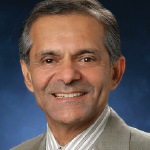On Oct. 4 in Chicago, the AMA hosted its second workshop on alternative payment models (APMs). The conference room was packed with providers and staff from specialty societies ready to listen to a whole day’s worth of APM presentations from professionals in the field.
To kick off the meeting, AMA President-Elect Barbara McAneny, MD, welcomed everyone and discussed the workshop’s goals. She was followed by AMA staff member Sandy Marks, who discussed AMA advocacy efforts regarding physician-focused APMs.
4 Panels
The first panel, moderated by Harold Miller of the Center for Healthcare Quality and Payment Reform, focused on how well current Medicare APMs support physicians and how they can be improved. Physician panelists discussed this issue in light of their own experiences in oncology care, comprehensive primary care, bundled payment and accountable care organization models.
Dr. McAneny moderated the next session in which Larry Kosinski, MD, described a case study of the physician-focused APM for managing patients with Crohn’s disease, called Project Sonar, which he designed, implemented and successfully proposed to the federal physician-focused Payment Model Technical Advisory Committee (PTAC).
The third panel was also moderated by Mr. Miller, and focused on various approaches to using per-member-per-month (PMPM) payments for physicians in APMs, including the use of monthly payments in addition to, rather than instead of, separate visit payments and in APMs being designed by specialties. Panelists described their experiences with PMPMs in payment models for direct primary care, dialysis, cancer care, palliative care and chronic disease management.
The final panel of the day was moderated by Dr. McAneny and centered on how APMs support coordinated diagnosis and care management, including primary care/specialty coordination in the “medical neighborhood,” specialty society-designed APMs, and APMs that require co-management of patients with multiple needs. Panelists included Carol Greenlee, MD, from the ACP Council of Subspecialty Societies, as well as physicians involved in APMs for rheumatoid arthritis, diabetes, emergency medicine, inflammatory bowel disease and asthma.
Rheumatology Angle
“I was highly encouraged by the satisfaction expressed almost universally by the presenters, [who came] from a wide range of specialties with developing models of care that were more team based and less dependent on face-to-face patient encounters,” says Tim Laing, MD, ACR representative on the AMA Relative Value Update Committee and panelist during the fourth presentation. “The message seemed to be that APMs provide a more thoughtful approach to managing patients, with much more opportunity to devote time and resources to those patients who need it most.
“An important cautionary note, however, is that the accompanying financial models are much less well developed, particularly with regard to risk sharing,” he continues. “That said, I think medicine as a whole has a terrific opportunity here to fundamentally redesign patient care for the benefit of all.”
According to Ed Herzig, MD, MACR, ACR board member, “The ACR has begun the process of developing an advanced alternative payment model that is specialty and physician focused. Attending this meeting gave us the opportunity to learn from others who are developing models for their own specialties. This meeting has helped inform us about the path forward and some of its pitfalls.
“There was a session at the Annual Meeting in San Diego on Sunday morning [Nov. 5] to discuss both MIPS and the APM,” he notes.
The ACR Board of Directors met on Nov. 4 in conjunction with the Annual Meeting and approved the continued development of a rheumatology-specific APM. The ACR’s APM workgroup will begin the next steps toward submitting the APM to CMS for review.
The 2017 ACR/ARHP Annual Meeting was held Nov. 3–8 in San Diego.

